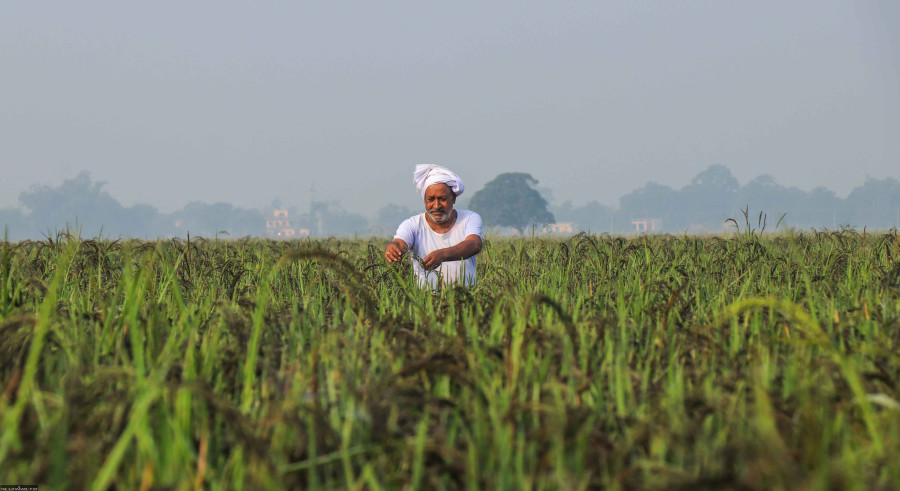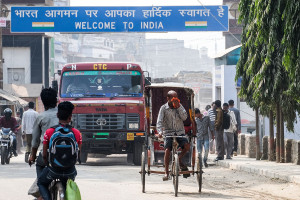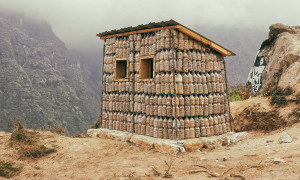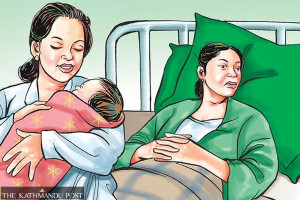Money
Delayed announcement of minimum support price no help for farmers
Usually, the rate is declared well in advance for farmers to plan their crops before the start of the planting season.
Post Report
The government was late in announcing the minimum support price for paddy this year. Usually, the rate is declared well in advance for farmers to plan their crops before the start of the planting season.
The minimum support price is the price the government guarantees to pay farmers for their harvest if the bottom drops out of the market. This year the floor price was issued on September 14, just one month before farmers begin collecting their crops.
“The announcement has been delayed,” said Prakash Kumar Sanjel, spokesperson for the Ministry of Agriculture and Livestock Development. “This is because of the changes in government and the recent political instability.”
Last year, the government was surprisingly punctual—announcing the floor price in June. Nepali farmers transplant paddy in June and harvest their crops in October.
The floor price is recommended by the Ministry of Agriculture and Livestock Development as per the government's policy to announce the minimum support price for key crops to protect farmers against sudden slumps in the market price.
This year, the minimum support price of “common paddy” has been raised to Rs29.02 per kg from Rs28.85 per kg last year. In the previous year, the price of common paddy was Rs26.73 per kg.
The minimum support price for "mota dhan" (short grain) has been set at Rs27.52 per kg, up from Rs27.35 per kg last year. In the previous year, the price was Rs25.32 per kg.
The floor price is the lowest price that can be charged for a commodity. The measure is intended to encourage farmers to grow crops. The price is computed based on the cost of production, transportation charges and inflation.
In case the market price of paddy drops below the base rate fixed by the government, it must purchase it from farmers at the support price.
In 2012, the government announced that it was resuming the policy of fixing the minimum price following complaints that middlemen were determining the market rate.
The measure was in line with the recommendation of the government and the directive of the then prime minister Baburam Bhattarai. But it was implemented only in 2016.
Several reports have pointed out that Nepal does not have an effective minimum support price. It used to be announced for paddy and wheat until 1999. The practice was fully abandoned after the government launched the 20-year Agriculture Perspective Plan.
Even when the support price was declared, it was not much relevant as it was set well below the projected market price to protect the government from having to buy farm products if prices should tumble.
Reports said that even when the minimum price was announced, it was not done before the beginning of the planting season so it was no help for farmers to make production decisions.
The Ministry of Commerce and Supplies is the implementing body. Under the Commerce and Supplies Ministry, Food Management and Trading Company, the new avatar of Nepal Food Corporation, buys paddy from farmers at the government-set prices. Last year, it purchased 27,000 tonnes of paddy.
According to Sanjel, paddy transplantation, which started in June, has been completed on 98 percent of the available 1.37 million hectares this year due to abundant rainfall and reverse migration to the villages, raising prospects of another good harvest.
Nepal’s economic wellbeing is intimately linked with the rainy season. Water from the skies is the lifeblood of Nepal's Rs4.26 trillion economy which is farm-dependent, as nearly two-thirds of the farmlands are rain-fed.
During the last fiscal year 2020-21 ended mid-July, the country’s paddy production reached 5.62 million tonnes, a record high for the fourth straight year due to "normal monsoon" rains and a plentiful supply of farmhands, even though a severe shortage of chemical fertiliser during transplantation and the top dressing had caused worry among farmers.
“This year, there were chemical fertiliser shortages in a few districts during the second weeding and top dressing period in August,” said Sanjel. “With less destruction on farmlands this year, we are expecting paddy production to increase, exceeding last year’s record harvest.”




 13.12°C Kathmandu
13.12°C Kathmandu













